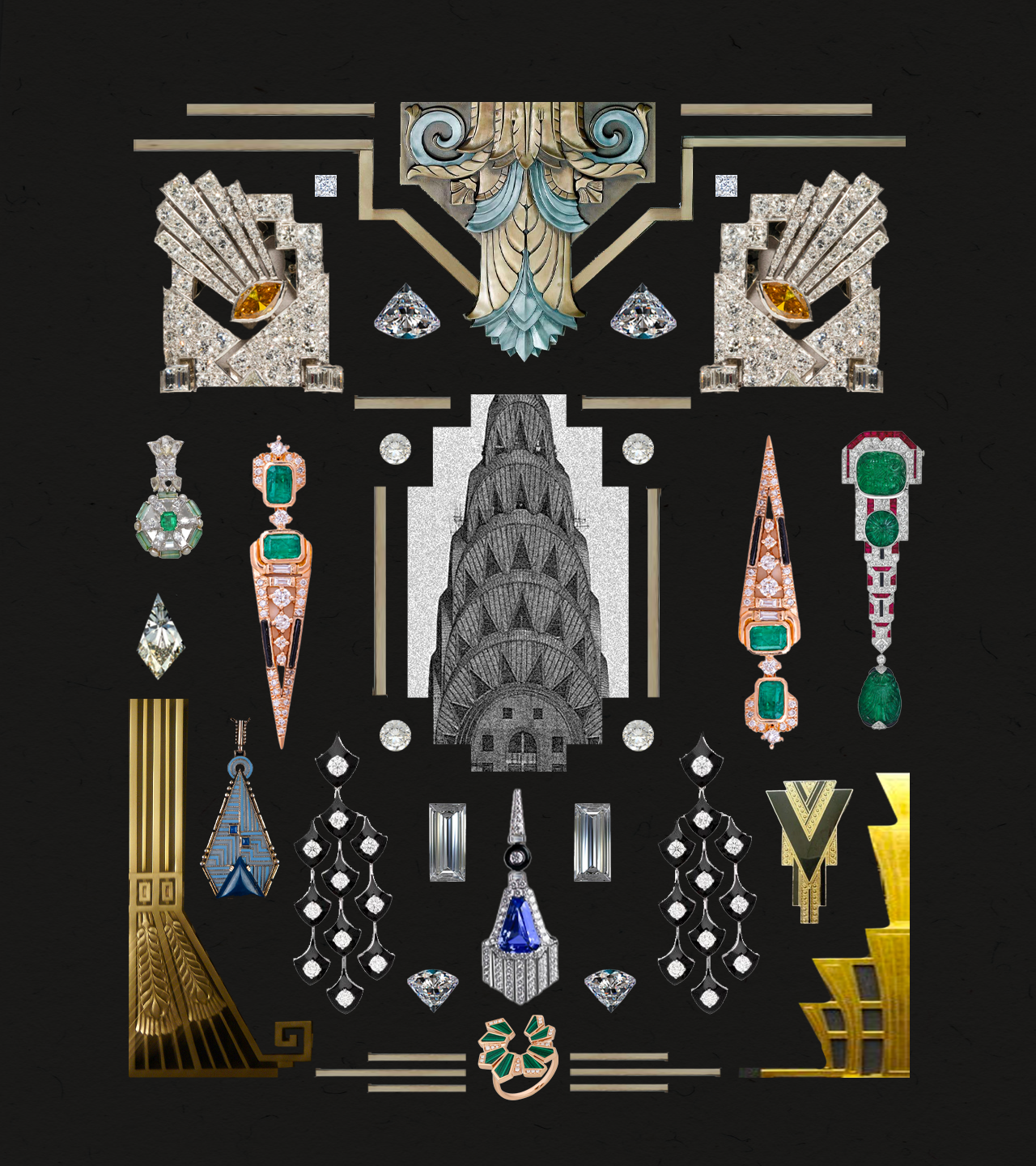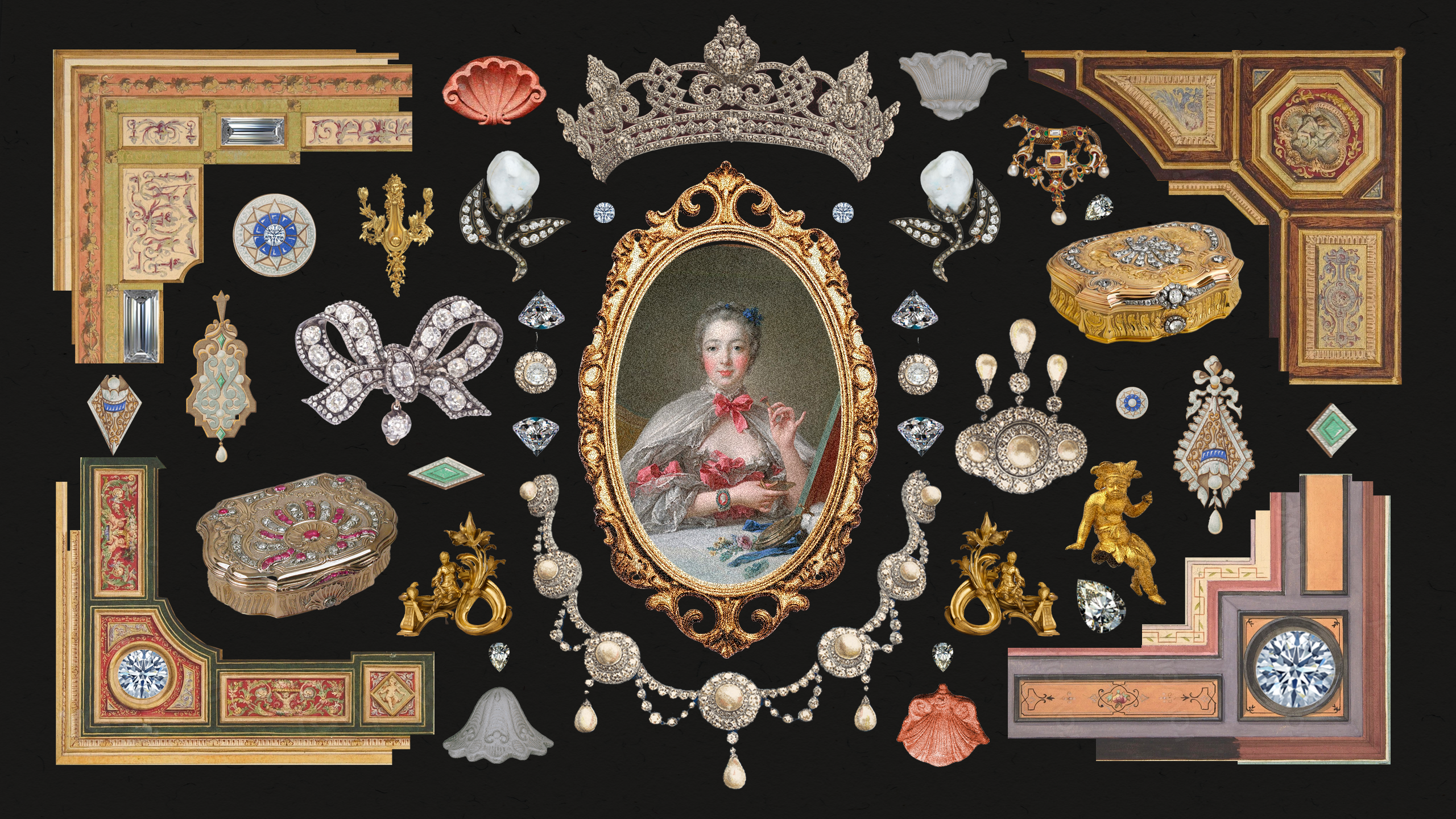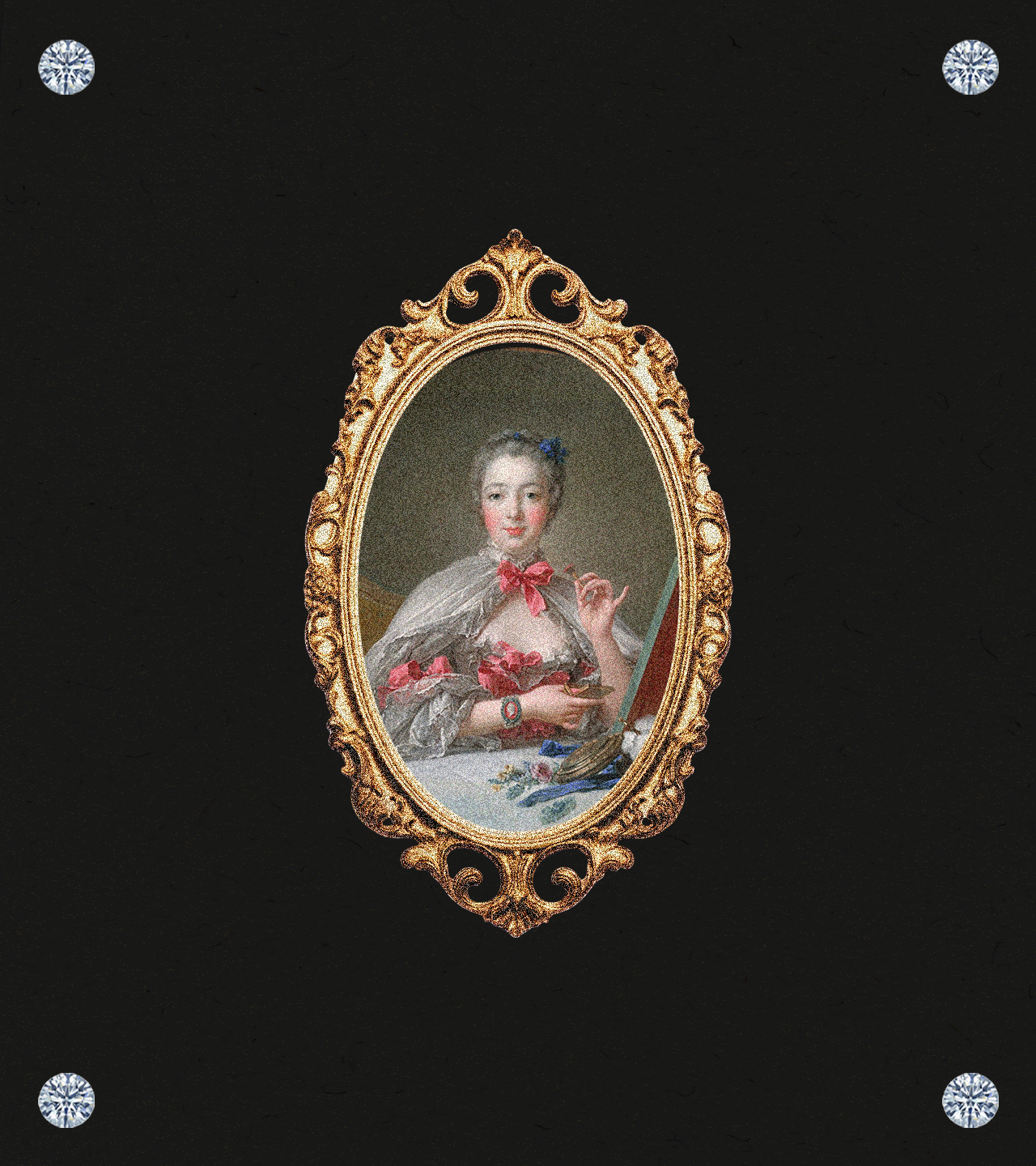How Design, Culture and Art Movements Inspired Natural Diamonds
From the exaggerated style of the Baroque era to the whiplash curves of art nouveau, diamond jewels’ malleable nature easily reflected the aesthetic of art movements.

Diamond’s Glow(ry) on Art
Artisanship has always been the core element in the design of diamond jewellery. The artisan’s skills and knowledge of the world have translated into rare jewels including the most famous diamonds like the Hope Diamond and Koh-i-Noor. So then, how is the artisanship of diamond jewels connected to art? How did epic diamonds echo a ‘new’ artistic technique, style, or culture? Adorned as symbols of beauty, do natural diamonds capture the contemplative mood of the jewellery makers?
Every art movement tells us that the epic diamonds reflect the passion of jewellery makers which swayed between lush textures, elongated spirals, whimsical elements, and quiet details. Diamonds sparked ideas of making, for both artists and artisans, who peeked into the world of Indian dignitaries, royalty, and the European traders possessing rare jewels. Here, we trail through one art period and three art movements spanning four centuries and multiple regions like Europe, North America, Japan, and India.
Glamourous Diamonds of the Pop Art Movement, 1955 – 1970

(bottom-left) Madhabi Mukherjee as Karuna in ‘Kapurush,’ 1965, directed by Satyajit Ray.
Image: Bvlgari.com
From the interwar Art Deco to the post-war Art Deco, art movements have come a long way with cross-cultural influences. The post-war period in America, especially, saw a rise in celebrity culture. Pop art flourished at the pinnacle of Hollywood glamour with celebrities like Audrey Hepburn (Breakfast at Tiffany’s), Elizabeth Taylor (Taylor-Burton diamond) and Marilyn Monroe (Diamonds Are a Girl’s Best Friend) expressing their desire for diamonds in popular movies and music. Marilyn Monroe would wear sparkling jewels and iconic diamonds to emphasise popularity and fun. Pop art movement’s designs contained bold references to collage, montage, and even comics through artists like Roy Lichtenstein, Richard Hamilton, and Andy Warhol. Even though pop art critiqued the facade of glamour, it also gave rise to some of the most enjoyable diamond jewellery designs.
One of the most iconic collections by brands like Bvlgari was their Wild Pop collection which included natural diamond jewellery in the form of oval-shaped diamond bracelets with cat patterns, graphic shapes, and outlines indicating an inspiration from Andy Warhol’s silkscreen prints.
In India, Mumbai-based artist Atul Dodiya’s work builds on pop and kitsch art. Leaving a lot to the viewer’s interpretation, cinematic paintings and posters like “Karuna”, keep the spectator like me wondering if the celebrity, Madhabi Mukherjee in this pop version, is wearing natural diamonds as she goes about her life.
The Newness of Art Nouveau Diamond Jewels (Late 19th – Early 20th c.)


THE ART NOUVEAU MOVEMENT REJECTED THE EPIC VICTORIAN STYLES FOR DIAMOND JEWELLERY WHICH WAS MADE WITH A MAKER’S IMAGINATION FOLLOWING A MORE AVANT-GARDE APPROACH.
Rene Lalique’s jewellery defines the richness of the Art Nouveau style, with its sinuous curves and inventive interpretations of Naturalistic forms adorned with natural diamonds and other rare gems.
Does every art movement share something new with the world? Expanding on the “newness” of Art Nouveau wouldn’t have been possible without the trade of natural diamonds. Natural diamonds were admired because they fit right into the core value of the movement: to use natural materials.
Meaning new art in French, art nouveau as a movement broke barriers of what was traditionally considered to be art. Illustrations, posters, and even invitation cards had dream-like swirling motifs, sinuous lines, and whiplash curves. During the late 1800s and the early 1900s, art nouveau diamond jewels had organic shapes building upon the past rococo elements and taking it a step further.
Art Nouveau was a movement that started in the 1880s until the First World War. This was a period when diamond extraction practices were gradually industrialised. Built on the arts and crafts movement that initially started in Britain, Art Nouveau had design influences from India, China, and Japan’s plant and insect species. In Art Nouveau, diamond jewellery emphasized naturalistic and botanical forms. The artisans rejected the epic Victorian styles that included gold, pearls and peridots for diamond jewellery which was made with a maker’s imagination following a more avant-garde approach. After all, it was more challenging for the makers to use a single element and create sensual forms.
Art Nouveau’s humanistic yet romantic elements often used natural diamond jewellery to depict a fantasy. In paintings such as Austrian painter Gustav Klimt’s ‘Woman in Gold’, a woman wears a diamond necklace that clings to her neck. Surrounding her are abstract shapes in gold, but it’s the rare diamond necklace that yet again communicates love, beauty, and power.
The diamond jewellery makers moved away from mainstream designs and focused on what the material was telling them. If the natural diamond found was organically forming an organic shape, the expert jeweller would reimagine designs around it. The artisans in India too trained in jewellery making during the British colonial rule. They creatively adopted Art Nouveau’s “pan-Asian” style, rejecting rigid British designs. Ultimately, the art nouveau was such an expansive period of creative pursuit, that jewellery makers around the world made their diamond designs “dance”.
Bold Diamonds of the Art Deco Movement (1920s and Beyond)

FROM DRESS CLIPS WITH NATURAL DIAMONDS ARRANGED IN ASYMMETRICAL SQUARE PATTERNS TO BROOCHES SHOWING BOLD GEOMETRIC SHAPES, ART DECO’S RARE JEWELS ECHOED ITS SURROUNDING ARCHITECTURE.

Art Deco cufflinks from the Chicago Museum of Art; Earrings: Hanut Singh, Ear studs: Hanut Singh, Danglers: Tallin; Earring Bottom Center: House of Umrao; Ring: Al Anwar
From Art Nouveau, emerged Art Deco during the interwar years. Rather than whimsical, flowy lines, Art Deco as an art movement was all about bringing back the industrious and serious nature of the Industrial Revolution.
The interlocking forms of machine parts, the geometric shapes and bold lines directly translated into rare diamond jewels. From Dress clips with natural diamonds arranged in asymmetrical square patterns to brooches showing bold diamond shapes, Art Deco’s rare jewels echoed its surrounding architecture. The jewellery makers/artisans glamourised bold lines over curved shapes and intelligently depicted function through design. Stylized flowers in Art Deco’s jewels contained Chinese and Japanese design influences.
In India, Art Deco architecture is quite evident in the streets of Mumbai. In Marine Drive, Bandra, and Churchgate amongst many areas, the vintage buildings of cinema halls and hotels contain Art Deco patterns. They imbue a nostalgic feeling and ask questions like did people who visited these buildings during the interwar years wear art deco diamond jewellery?
Today in India, Art Deco and Nouveau’s influences are evident in designer Hanut Singh’s work. Singh’s great-grandfather, Maharaja Jagatjit Singh commissioned work from many artisans when the two art movements were taking off. His jewellery almost always contains natural diamonds with bold lines or poetic curves.
The Flamboyant and Large Diamonds of Baroque and Rococo (17th – 18th c.)

If we look closely at the realism of 18th-century oil portraits of royalty, the presence of glorious natural diamonds is quite evident. From duchesses wearing diamond jewels with never-ending rocaille patterns to archduchesses flaunting diamond jewels swaying into undulated ribbons and garlands, the complicated craft of jewellery making was at its pinnacle. Such was the allure of epic diamonds of the rococo and baroque era, that due to the art style’s flamboyant nature, large diamonds were necessary.
The Baroque era refers to a period or a style of art that emerged in Italy and spread to the rest of Europe around the 1600s. Baroque artists experimented with light and shadow to express their flamboyant nature. By the early 1700s, Baroque transformed into the French Rococo style which brought with it some playfulness and drama. Defined by c-curves and s-curves, baroque and rococo design soon spread beyond the palaces (fashion, interiors), and most importantly through diamond jewellery.
The stories around baroque-style diamond jewellery gifted or owned by Marie Antoinette are endless. Marie Antoinette who carried with her the sensuality of baroque, owned three diamond bracelets. Made of natural diamonds, these bracelets were some of her most expensive valuables and were considered jewels “that she had to have.” She also owned a pair of diamond earrings, necklaces and rings. The origins of these epic diamonds could be connected to the famous diamonds that were being produced in the Golconda region of India in the 18th century.


NATURAL DIAMONDS AND ART MOVEMENTS INTERTWINE AS UNPARALLELED EXPRESSIONS OF CREATIVITY AND HISTORY.
As the unrivalled expressions of creativity and history, natural diamonds and art movements go hand in hand. Fast forward to today, diamonds designed from the 17th century to the late 20th century continue to influence the rare jewels which derive their collage of ideas from them.
Ultimately, what I took away from the relationship between art, cultural exchanges, and natural diamonds is that while many appreciate the beauty of the diamond jewels, it is important to pause and take a moment to commemorate its very layered design language.
